Match column A and Column B with the help of the Figure. Vertically opposite angles Alternate angles Corresponding angles. Figure
To solve the problem of matching Column A (Vertically opposite angles, Alternate angles, Corresponding angles) with Column B using the figure, follow these steps:
1. Understand the Definitions:
- Vertically Opposite Angles: When two lines intersect, the angles opposite each other are called vertically opposite angles. They are equal.
- Alternate Angles: When a transversal crosses two parallel lines, the angles that are on opposite sides of the transversal but inside the two lines are called alternate angles. They are equal.
- Corresponding Angles: When a transversal crosses two parallel lines, the angles that are in the same position at each intersection are called corresponding angles. They are equal.
2. Identify the Angles in the Figure:
- Label the angles in the figure for easier reference. For example, label angles as PAB, ABS, RBY, and XAQ.
3. Match Vertically Opposite Angles:
- Look for pairs of angles that are opposite each other in the intersection of the lines.
- In the example, angle PAB and angle XAQ are vertically opposite angles.
- Match: Vertically opposite angles → PAB and XAQ.
4. Match Alternate Angles:
- Identify angles that are on opposite sides of the transversal but inside the parallel lines.
- In the example, angle PAB and angle ABS are alternate angles.
- Match: Alternate angles → PAB and ABS.
5. Match Corresponding Angles:
- Identify angles that are in the same position at the intersection of the transversal with the parallel lines.
- In the example, angle PAB and angle RBY are corresponding angles.
- Match: Corresponding angles → PAB and RBY.
Final Matches:
- Vertically Opposite Angles: PAB and XAQ
- Alternate Angles: PAB and ABS
- Corresponding Angles: PAB and RBY
- Vertically Opposite Angles: When two lines intersect, the angles opposite each other are called vertically opposite angles. They are equal.
- Alternate Angles: When a transversal crosses two parallel lines, the angles that are on opposite sides of the transversal but inside the two lines are called alternate angles. They are equal.
- Corresponding Angles: When a transversal crosses two parallel lines, the angles that are in the same position at each intersection are called corresponding angles. They are equal.
- Label the angles in the figure for easier reference. For example, label angles as PAB, ABS, RBY, and XAQ.
- Look for pairs of angles that are opposite each other in the intersection of the lines.
- In the example, angle PAB and angle XAQ are vertically opposite angles.
- Match: Vertically opposite angles → PAB and XAQ.
- Identify angles that are on opposite sides of the transversal but inside the parallel lines.
- In the example, angle PAB and angle ABS are alternate angles.
- Match: Alternate angles → PAB and ABS.
- Identify angles that are in the same position at the intersection of the transversal with the parallel lines.
- In the example, angle PAB and angle RBY are corresponding angles.
- Match: Corresponding angles → PAB and RBY.
- Vertically Opposite Angles: PAB and XAQ
- Alternate Angles: PAB and ABS
- Corresponding Angles: PAB and RBY
Topper's Solved these Questions
Similar Questions
Match Column A with Column B
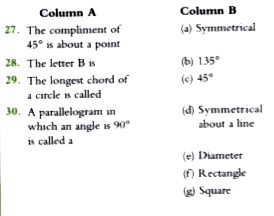 View Solution
View SolutionMatch Column A with Column B
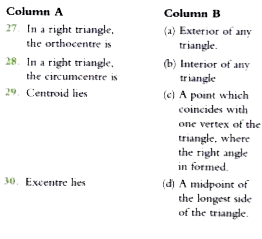 View Solution
View SolutionMatch Column A with Column B
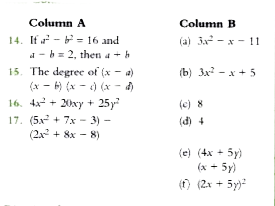 View Solution
View SolutionMatch Column A with Column B
 View Solution
View SolutionMatch Column A with Column B
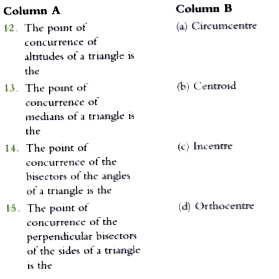 View Solution
View SolutionMatch Column A with Column B
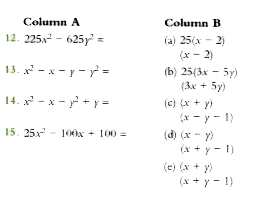 View Solution
View SolutionMatch Column A with Column B
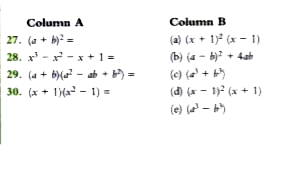 View Solution
View SolutionMatch Column A with Column B
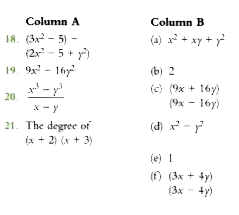 View Solution
View SolutionMatch Column A with Column B.
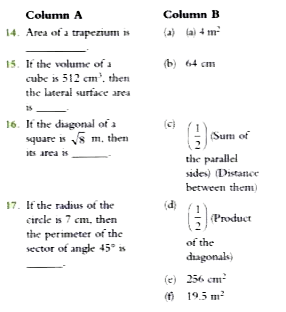 View Solution
View SolutionMatch Column A with Column B.
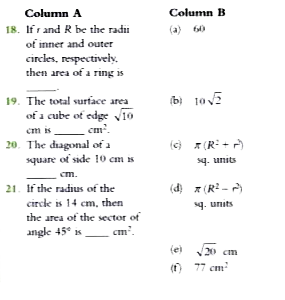 View Solution
View Solution

